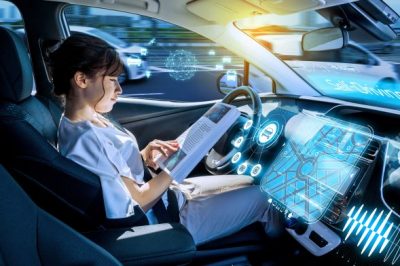What do Autonomous and Connected Vehicles do?
An autonomous and connected vehicle should have the ability to integrate sensing, perceiving and analyzing to its environment, both inside and outside the vehicle, to communicate with its environment, to plan and make decisions to achieve a predefined set of desirable functional and non-functional goals, and to execute a series of steps as per the identified plans.
It is then clear that a series of enabling capabilities are necessary to deploy autonomous and connected vehicle solutions. Carleton seeks to ensure that while research on specialized enabling technologies remains core, we also look at this from a system engineering perspective.

Sensing & Perceiving – Similarly to the human body, the vehicle needs senses (sensors) information from the outside world (within and outside the vehicle). But this is not enough. The vehicle must be capable of perceiving its environment, that is, making sense of it through the active process of selecting, organizing, and interpreting the sensed information (e.g., with sensor fusion and data analytics).
Communicating – This includes communication capability using various wireless communication standards (e.g., Bluetooth, WiFi, 4G and 5G, dedicated short-range communications) and protocols, for vehicle-to-vehicle (V2V) and vehicle-to-roadside (V2R) connectivity, for the appropriate operation of the vehicle as well as for entertainment, but also the capability to seamlessly integrate into dynamic, vehicular networks (e.g., radio access network, software defined networking).
Decision-making – The vehicle will be expected to achieve a number of dynamic driving tasks in specific operational design domains [SAE] as effectively and efficiently as a human driver (e.g., lateral vehicle motion control via steering during high-speed cruising, monitoring the driving environment via object and event detection, recognition, classification, and response preparation in a residential neighbourhood), which will require that the vehicle be capable of reasoning, problem-solving and planning (A.I./Machine Learning).
Safety, Security and Privacy – Software needs to be designed such that it will make connected vehicles more secure, safe, and efficient; and thereby make their widespread deployment practical and commercially viable. This requires that we identify and analyze the risks and vulnerabilities associated with cyber-attacks related to connected vehicles, including examining existing countermeasures, and exploring the limitations of these methods while taking into account system resource constraints, high mobility of vehicles, and security requirements for intelligent transportation systems.
Deployment issues: Ethical, Economic, Legal and Regulatory Implications – Consumer acceptability of autonomous vehicles hinges, in large part, on understanding the implications to people’s daily lives. For instance, how might autonomous vehicles impact the lives of the elderly or disabled? Ethical questions must be explored surrounding vehicle decision-making, legal questions regarding at-fault accidents and the economic impacts on industries and jobs that currently rely on human drivers, as well as the impacts that might arise from potential restructuring of the insurance industry and driver’s licensing regimes.
